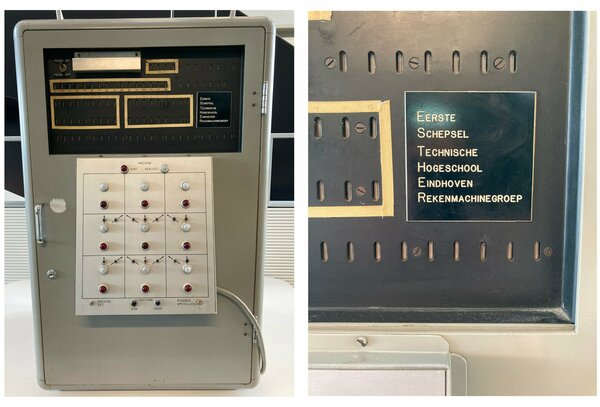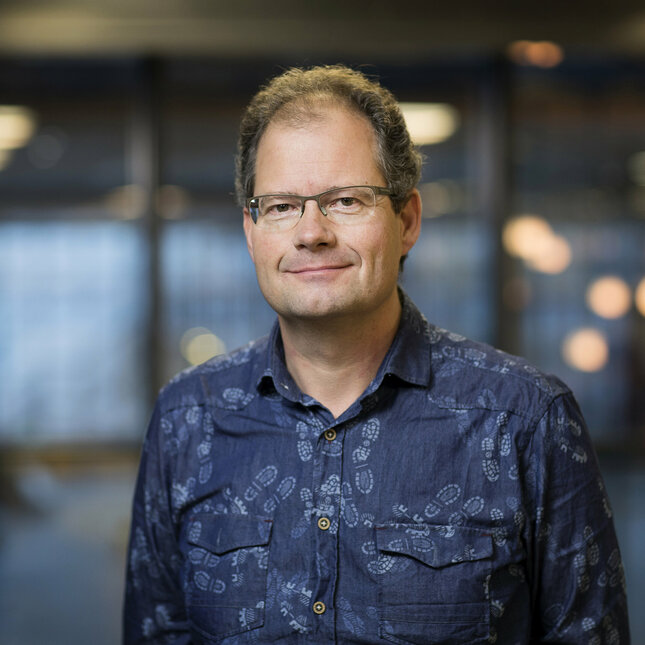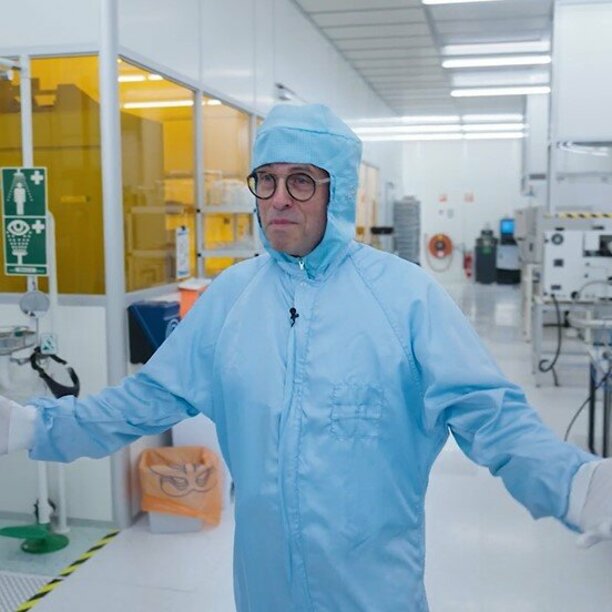A new and efficient chip design will demand even more of modern chip machines
How TU/e researchers push further the performance of computer chips while at the same time making them more efficient.
![[Translate to English:] [Translate to English:]](https://assets.w3.tue.nl/w/fileadmin/_processed_/3/d/csm_HTSC%20Banner%20image_3f99c4911e.jpeg)
Nowadays, it’s hard to envision the world without computers. But the ever better performing chips in smartphones, cars, and almost every modern device are consuming more and more power. If we do not find ways to make them more energy efficient, the footprint of the digital world will become unsustainably large. Every day, 400 researchers work within the High Tech Systems Center (HTSC) at Eindhoven University of Technology to push the boundaries of what is technically possible in the fabrication of next level chips.
TU/e had existed just four years when scientists from the Electronic Systems group built their first computer. Esther, which stands for ‘Eerste Schepsel Technische Hogeschool Eindhoven Rekenmachinegroep’, can play a simple cat-and-mouse game against a human opponent on a 3 by 3 playing field. With several hundred transistors, the computer was able to learn from its mistakes and get better at the game. That was the year 1960.

A modern smartphone these days has a processor consisting of about ten billion transistors. Its computing power dwarfs the performance of any computer from Esther's time.
Eindhoven plays a crucial role in enabling this enormous growth in computing performance. There are dozens of companies in the region that develop equipment or technology to advance them, with ASML being the best-known example.
The Netherlands dominates the European production of manufacturing equipment.
“The Netherlands dominates the European production of manufacturing equipment,” says Victor Sánchez Martín, managing director of the High Tech Systems Center (HTSC). “The Brainport Eindhoven region is like a center of gravitational attraction when it comes the global chip manufacturing industry.” And TU/e plays a central role in it.

Fundamental research
The list of TU/e-based research projects on chip machines is long and diverse. For example, researchers are looking at capturing tiny particles in chip machines with an electric field to keep atomic-scale contamination from inferring with the chip manufacturing process.
Other researchers are also investigating super-cooled motors for even faster manipulation of the so-called silicon wafers that serve as the basis or substrate of chips. Artificial intelligence is being developed for more precise control of the wafer and for predicting when maintenance work is required.
Without fundamental research, innovation in the chip machine world with come to a grinding halt.
Added to that, improved lithographic techniques are being explored, as well as improved strategies for chip machine design. It seems that there are barely any parts of the machines that make chips that the researchers do not think about improving.
Without fundamental research, innovation in the chip machine world with come to a grinding halt, says Jeroen Voeten professor in the Electrical Engineering department and scientific director of HTSC.
Fundamental research has uncertain outcomes and projects typically take many years. Companies are not always able to carry that risk on their own. According to Voeten, it’s the researchers at the university that play an important role in tackling these fundamental challenges, oftentimes in close collaboration with companies.
As an example, Voeten and colleagues worked on a technique to automatically implement motion controllers, making sure that they run at the required sampling frequencies and satisfy their timing requirements. “That research took ten years, but the technology eventually ended up in the latest ASML machines, a very rewarding achievement. It now saves a lot of design and implementation work in the industry,” he says.

Dedicated and efficient chips
The chip industry is developing faster than ever, and technological innovations can push chips to higher speeds while becoming more efficient. Anyone who looks towards the future can already see what this means for the chip machines that will make future chips.
First, circuits will be even smaller, moving from the nanoscale range to features that are even smaller than a nanometer. This means that even smaller contaminations can cause trouble for the manufacturing process, and they’ll have to be compensated for.
Second, chips will expand in the third dimension and integrate more new technologies, such as photonics, which uses light rather than electricity to transfer digital signals. This allows for faster and more energy-efficient computing.
Finally, future chips will be more ‘modular’, and consist of many smaller chips, otherwise known as chiplets. Each chiplet can be seen as a specialized part of a chip that performs a dedicated task, such as face recognition, quickly and much more efficiently.
“A big challenge for the high-tech sector will be to invent machines to manufacture, test, and inspect the integration of these chiplets,” Voeten says. “Accurately stacking those chiplets is required to allow them to communicate, a technique that we have yet to master.”
Designing chips and machines ‘in sync’
An important question is whether outcomes from dedicated research eventually find their way to industry practice. According to Sánchez Martín, this can only succeed if there is a tight bond between a company and the university. “In order to have a significant impact in industry, both parties really need to trust each other and develop a long-term relationship and strategy,” he says.
We believe that these disciplines will inevitably have to converge to design and manufacture the next generation of chips. TU/e is the place where those worlds come together.
TU/e recently started ‘Future Chips Flagship’ initiative. With this flagship, we want to “unite” the worlds of chips, equipment, processes and materials, says Voeten.
“Until now, these worlds have evolved rather independently. We believe that these disciplines will inevitably have to converge to design and manufacture the next generation of chips,” he says. “And the TU/e is the place where those worlds come together and where we will train the new talent that is needed for this.”
Latest news
![[Translate to English:] All winners of the 2024 Research Awards. From left to right: Beatrice Federici, Francesca Grisoni, Marc Geers, Vincent Debets, Calum Ryan and Tugce Martagan. Photo: Bart van Overbeeke.](https://assets.w3.tue.nl/w/fileadmin/_processed_/5/1/csm_BvOF%202024_0613_DMH%20TUe%20Research%20Day%20-%20All%20Award%20winners_e4779eae60.jpg)


